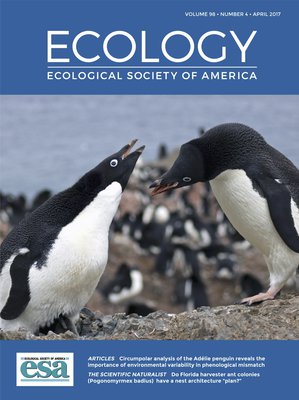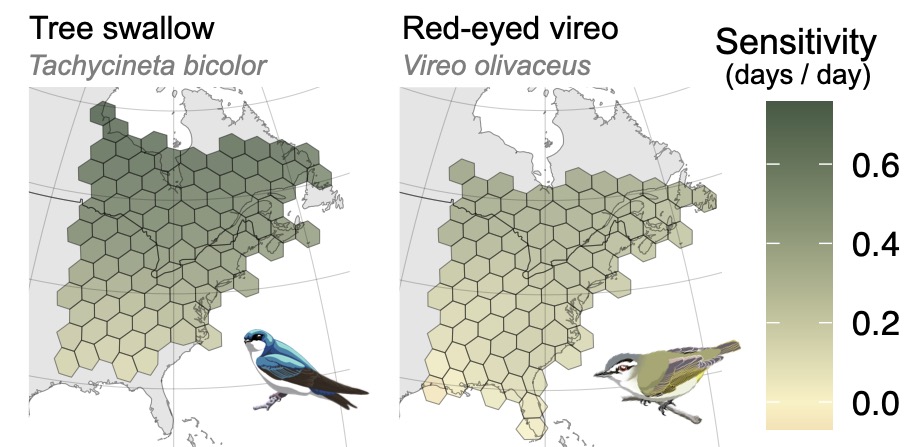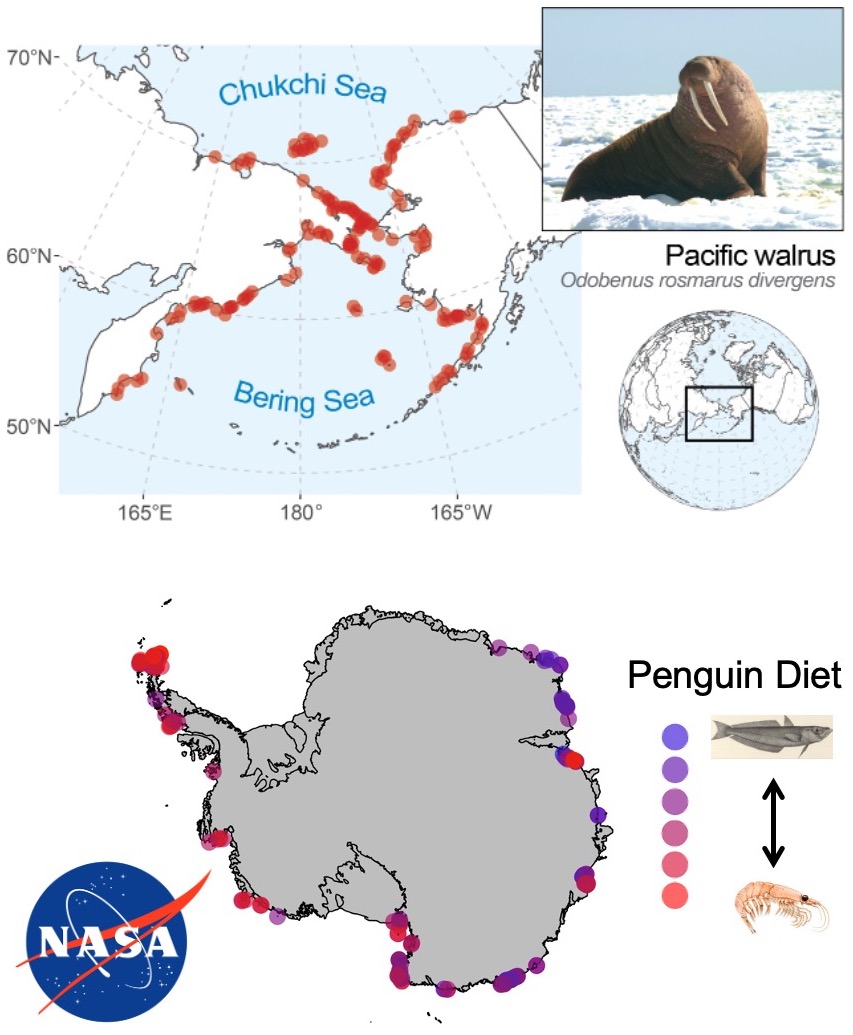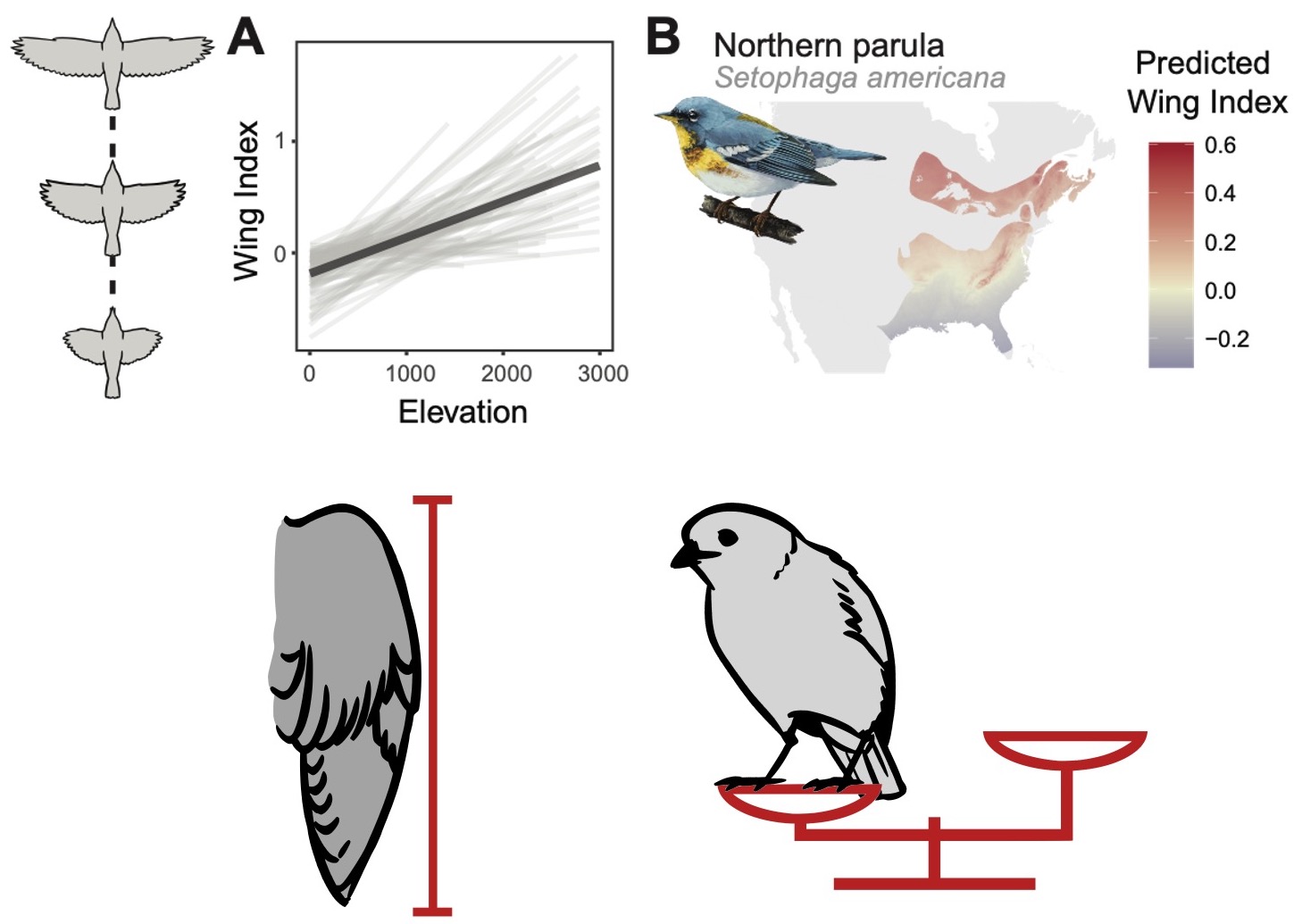Research
The importance of timing in ecological systems
The timing of seasonal events (phenology) plays an important role in ecosystem function. Organisms must often time life-history events to coincide with favorable environmental conditions and/or peaks in resource availability. There is growing concern that as phenology changes in response to rapid climatic change, ecological interactions (i.e., predation, competition, mutualisms) are becoming increasingly decoupled in time. However, much remains unknown regarding how and why phenological responses vary across time, space, and trophic levels, and the consequences of these responses. Our work in this area is focused on understanding whether the phenology of plants and animals is keeping pace with climate change and the consequences these responses might have for the persistence of populations. We are exploring these questions at both the individual and population levels and the intrinsic connections between phenology and the varied life history strategies that organisms exhibit.



Harnessing the data revolution to understand population responses to global change

Given the complexities of ecological systems, understanding and predicting how population processes are responding to changing environmental conditions is a challenging task. Concurrent with technological advances, new and forthcoming data resources, particularly those from terrestrial- and space-based remote sensors, are fundamentally changing the landscape of opportunity in this area. Our work leverages these data resources using advances in statistical modeling and artificial intelligence to quantify how animal populations are responding to global change and to support the long-term monitoring of ecological systems. Our previous NASA-funded work in this area sought to characterize dietary change and its links to demographic trends in penguin populations over decadal, continental scales using the spectral characteristics of guano at Antarctic penguin colonies. Additional, ongoing work uses newly available quantitative tools in conjunction with satellite imagery to understand how Pacific walrus are responding to a changing Arctic. This research leverages AI-based deep learning approaches to identify walrus in satellite imagery, making it possible to collect data at regular time intervals at a range-wide scale. Data streams such as these then provide a means to characterize how the spatiotemporal distribution, abundance, and phenology of animals are responding to rapidly changing conditions, with applications for conservation management and environmental decision making.
Characterizing the drivers of biodiversity across scales
Biodiversity represents the manifestation of a number of processes acting across different spatiotemporal scales and across levels of biological organization. In understanding how and why different elements of natural systems vary and covary across these different axes, we can begin to understand the eco-evolutionary dynamics that shape ecological communities. Using insights from community ecology, evolutionary ecology, and spatial statistics, our work takes a cross-scale approach to characterizing the drivers of biodiversity, with a focus on life history and morphological traits. Taking a 'big data' approach and motivated by a body of theoretical work, we are exploring these patterns across hundreds of bird species across the Americas. This work addresses a diverse set of questions, including the role of functional tradeoffs in shaping morphological variation within and among species, with implications for understanding both existing and new large-scale ecomorphological 'rules'. In exploring these dynamics from the level of the individual to entire communities, we ultimately seek to understand what these processes can tell us regarding how systems are likely to respond to future global change.
